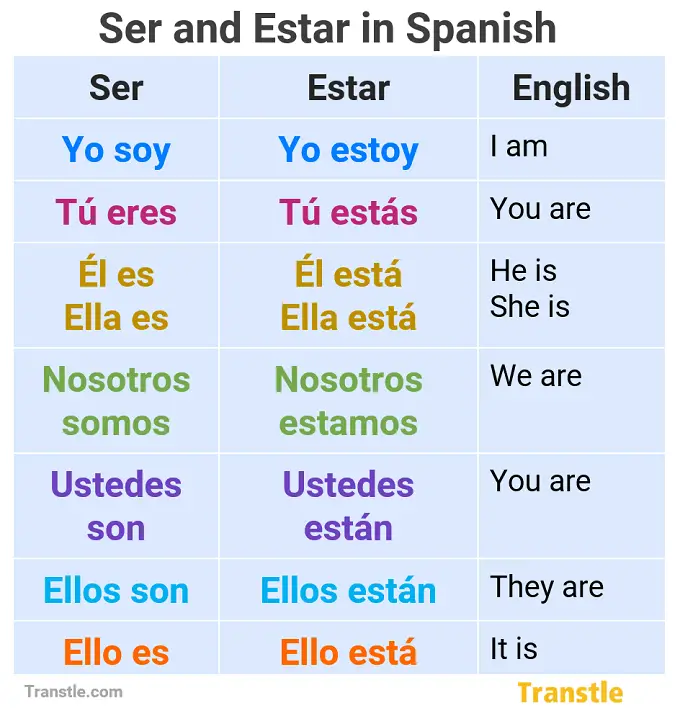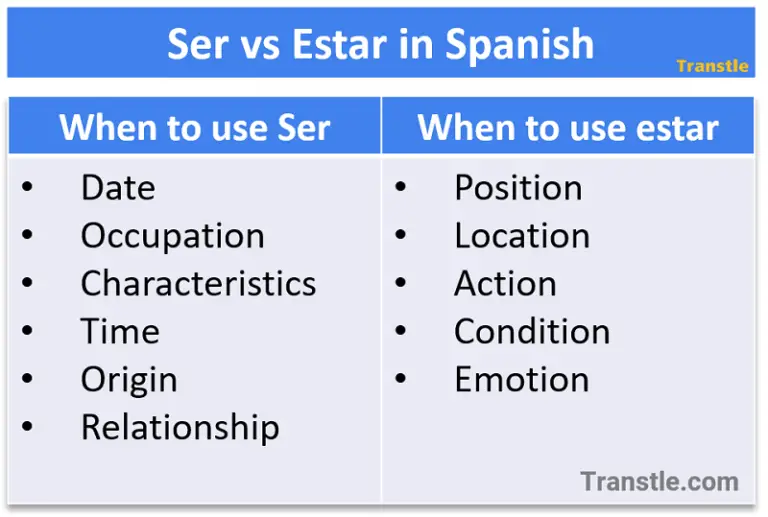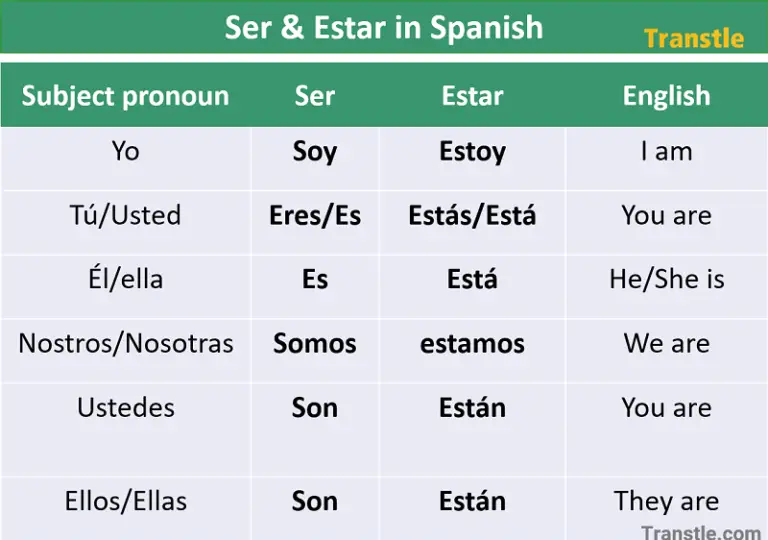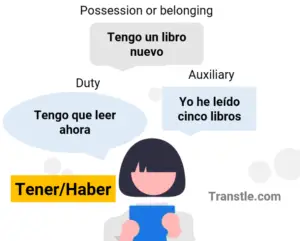Ser and Estar: The Ultimate Guide to the “To Be” Verbs in Spanish

Ser and Estar both mean “to be,” but they describe very different things about people, animals, or objects. The key is that Ser describes permanent or inherent qualities, while Estar is used for temporary states, locations, or conditions. Mastering this difference is fundamental to sounding natural.
For example:
|

Conjugation of Ser and Estar
Before diving into their uses, here’s how Ser and Estar are conjugated in the present tense.

When to Use Ser
Think of Ser as describing what something or someone IS. It’s used for inherent, fundamental, or unchanging aspects. A great trick to remember is the acronym DOCTOR: Description, Occupation, Characteristic, Time, Origen, Relationship.
Description and Quality
|
Origin and Nationality
|
Occupation
|
Time and Date
|
Possession and Relationship
|
When to Use Estar
Use Estar to describe how or where something or someone IS at a particular moment. It’s for temporary states, locations, and actions in progress. A good trick to remember is the acronym PLACE: Position, Location, Action, Condition, Emotion.
Position and Location
|
Temporary Conditions and Emotions
|
Actions in Progress
|
Ser and “It”: The Spanish Approach
In English, we often use “it” to talk about objects or situations. In Spanish, you usually don’t use a pronoun for “it.” However, when describing an inherent quality or identity of something, you’ll use a form of Ser, most commonly Es.
|
Exercises
Test your knowledge of Ser and Estar.
Exercise 1: Complete the sentence
Complete the sentence with the correct conjugation of Ser or Estar.
- Nosotros ________ en el parque. (location)
- Mi abuelo ________ alto y delgado. (description)
- ¿Cómo ________ tú hoy? (condition)
- Ellos ________ de Chile. (origin)
- ________ las cinco de la tarde. (time)
Exercise 2: Ser or Estar?
Choose the correct option for each sentence.
- Mi hermana es / está my best friend.
- La puerta es / está abierta.
- El perro es / está durmiendo.
- Mi mamá es / está profesora.
Answers
Exercise 1
- estamos
- es
- estás
- son
- Son
Exercise 2
- es (relationship)
- está (resulting condition)
- está (action in progress)
- es (occupation)
Read next

Haber and Tener in Spanish: Full Guide, Differences & Examples
Spanish verbs haber and tener are the equivalent of the English verb “to have”. Tener expresses belonging and duty, and haber is an auxiliary verb.

How to learn Spanish: Step-by-step Guide with Examples
How to learn Spanish: Step-by-step guide on what you should do to finally learn Spanish, tricks, tips and more to learn easily.